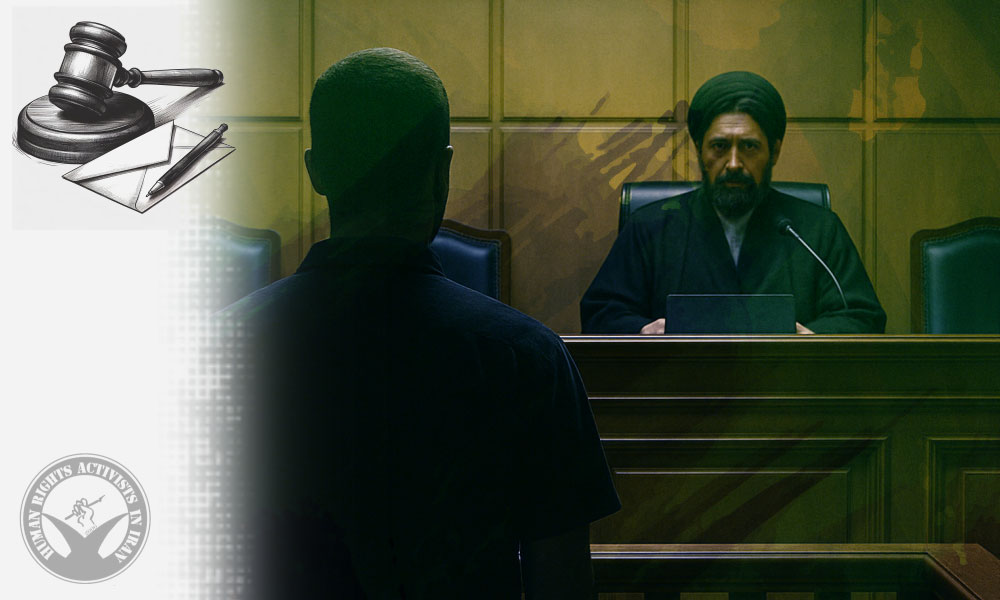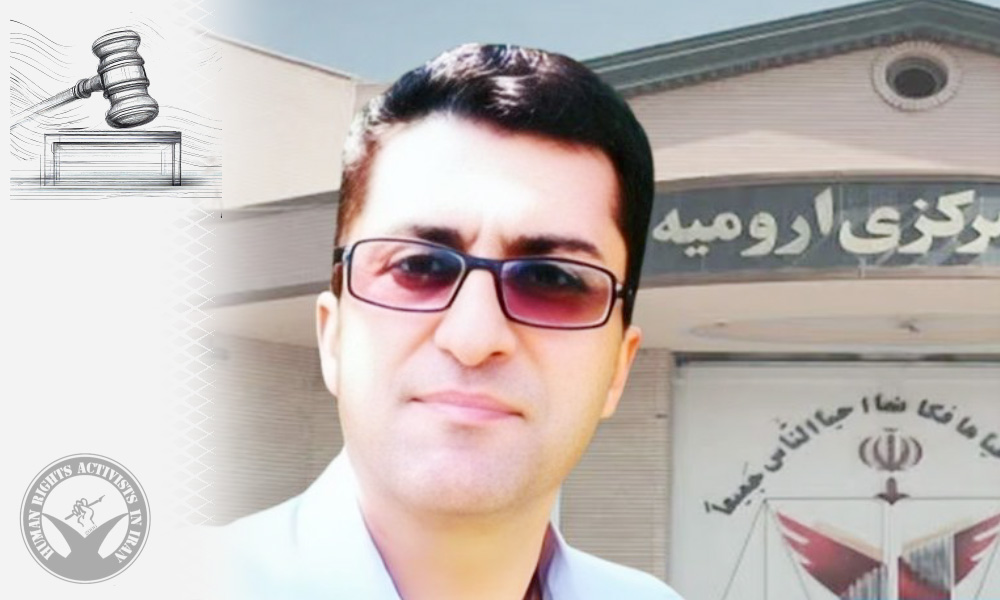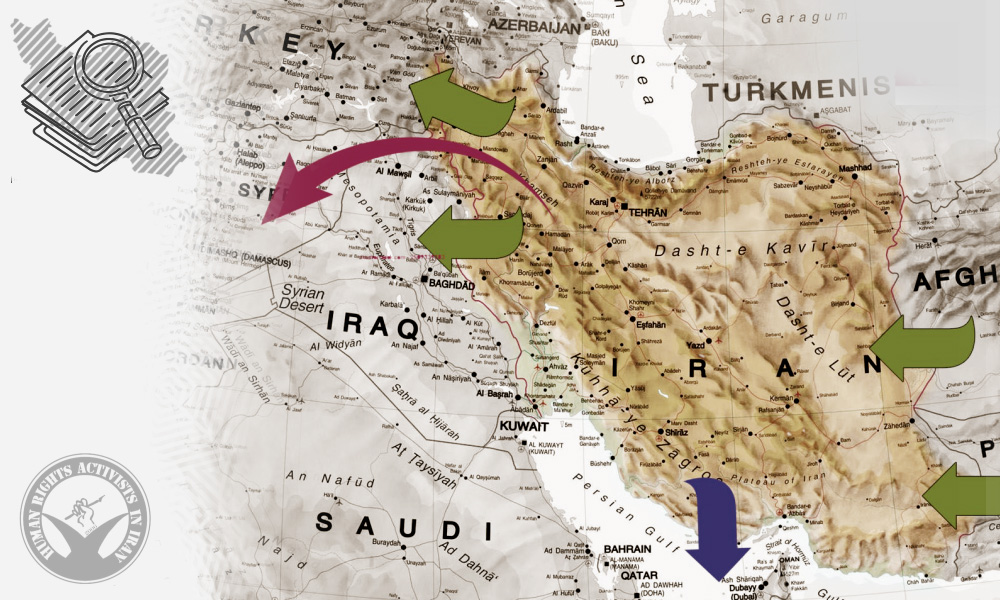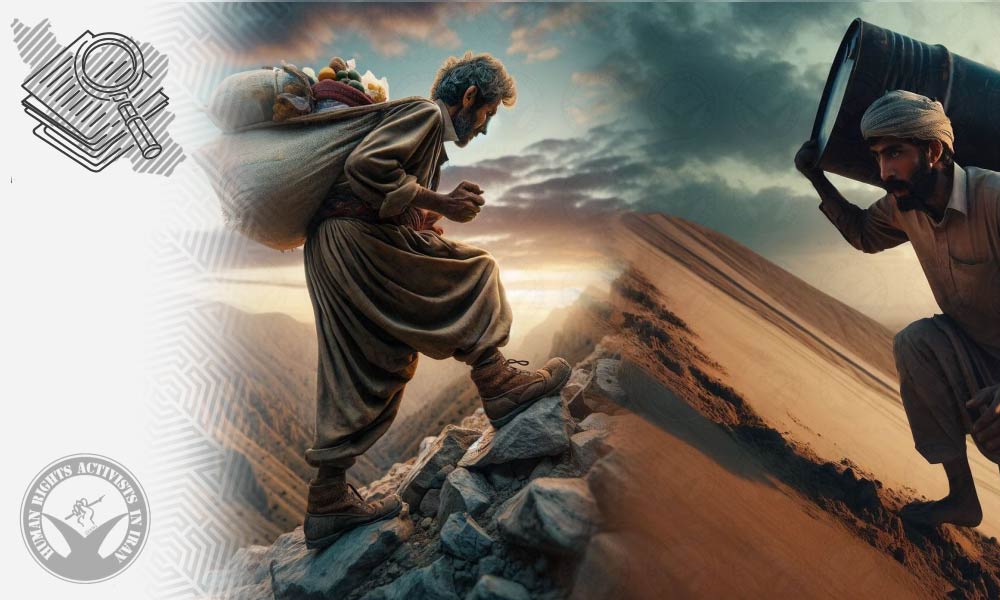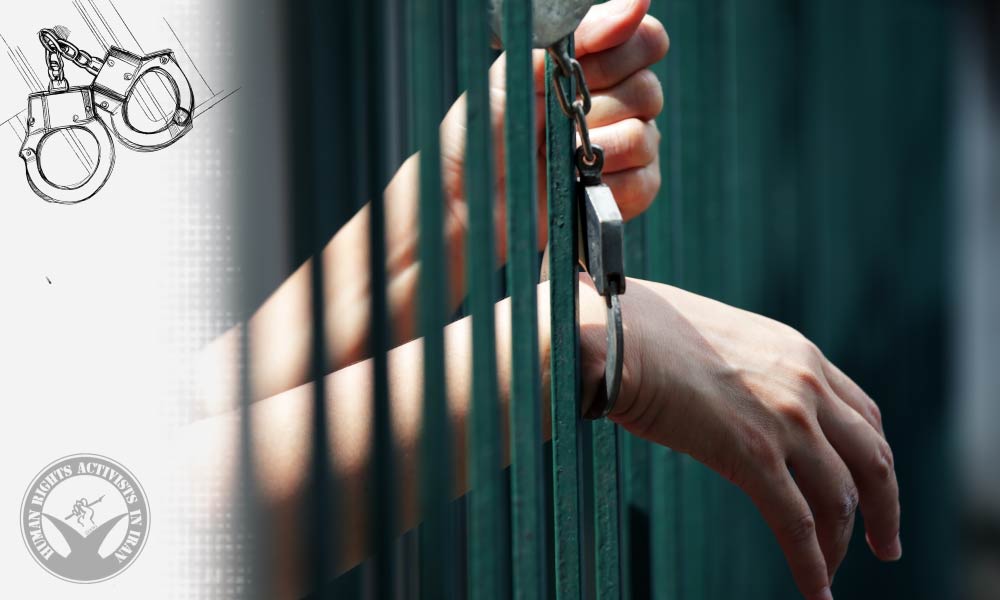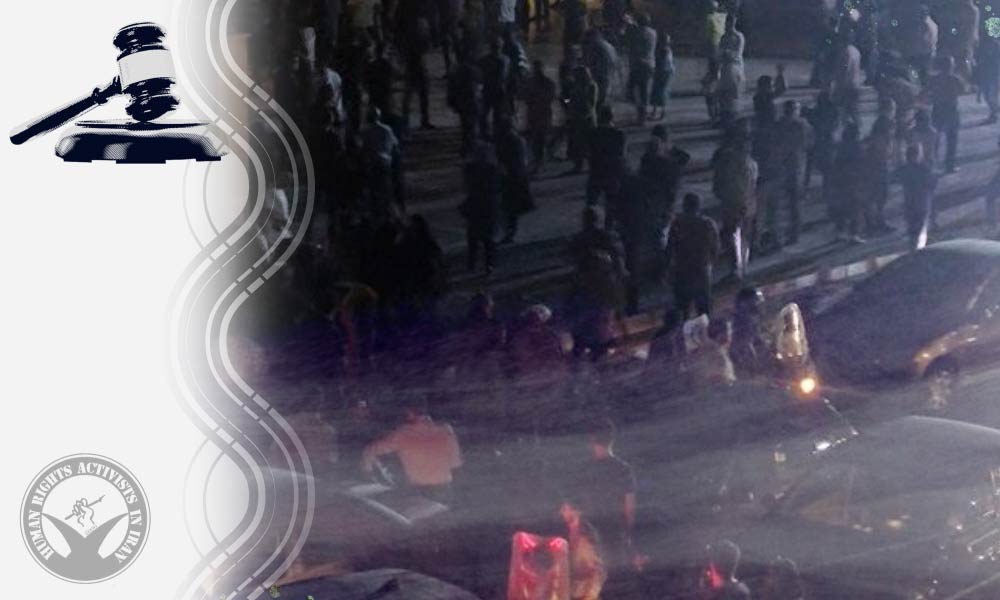HRANA News Agency – The military conflict between Iran and Israel, which began in the early hours of Friday, June 13th, with Israeli airstrikes on Iranian territory, entered its fifth day yesterday. Since the outset of the conflict, military installations, civilian infrastructure, and residential areas across Iran have been targeted.
Yesterday, the spokesperson of the Iranian Red Crescent reported that 21 provinces have been affected since the start of Israel’s attacks. According to published reports, at least seven people were killed or injured in yesterday’s assaults. Based on non-governmental sources, as of June 17, 23:00 UTC, the total number of casualties over the past five days has reached at least 1,911, including 585 dead and 1,326 injured.
Geographic Scope of the Strikes
In continuation of Israel’s military attacks on Iranian territory, yesterday energy infrastructure, military facilities, and residential areas were attacked in the provinces of Tehran, Isfahan, East Azerbaijan, Alborz, Markazi, Qazvin, Khuzestan, Hormozgan, West Azerbaijan, Khorasan Razavi, Kurdistan, Kermanshah, Chaharmahal and Bakhtiari, Hamedan, Bushehr, and Kerman. Isfahan Province was Israel’s primary target yesterday.
Regarding the geographical scope of Israel’s attacks in Iran, Mojtaba Khaledi, the spokesperson for the Red Crescent, without naming specific provinces, stated: “Since the beginning of Israel’s attacks, 21 provinces have been involved.”
Casualties among Red Crescent rescue workers in Tehran were among yesterday’s notable events. According to the Red Crescent spokesperson, four rescue workers have been killed in the Israeli attacks so far.
Explosions in some areas have caused extensive damage and likely resulted in additional casualties. Further information is under investigation and will be updated.

Military Equipment and Scale of Attacks
The Israeli army previously announced that during the first three days of attacks on Iran, it conducted 720 airstrikes across various parts of the country. This figure has not yet been updated by Israel.
In the investigations of human rights groups, proportionality under the laws of war is of particular importance — including proportionality between targets and weaponry. According to information gathered from credible sources, the Israeli army used the following weapons in its attack:
| Weapon | Type | Model/Variant | Description & Role |
|---|
| 1 | Harop | Loitering attack drone | – (IAI Harop) | Autonomous kamikaze drone that loiters and dives onto targets (especially radars). Used to suppress Iranian air defenses and communications by homing in on radar emissions. |
| 2 | Harpy | Loitering anti-radar drone | – (IAI Harpy) | Anti-radiation loitering munition designed to seek and destroy enemy radars. Older, fire-and-forget drone that crashes into SAM radar emitters. Complemented Harop in knocking out Iran’s SAM sites. |
| 3 | F-35I “Adir” | Stealth multirole fighter | F-35I (Israel variant) | 5th-gen stealth fighter jet with Israeli electronics. Penetrated Iranian airspace undetected to lead initial strikes, targeting air defenses, command centers, and nuclear sites with precision munitions. |
| 4 | F-15I “Ra’am” | Strike fighter-bomber | F-15I (Israel variant) | Long-range heavy fighter (F-15E variant) carrying large payloads (bunker busters, etc.). Non-stealth, but high payload and range; used to bomb hardened sites like Natanz once air defenses were down. |
| 5 | F-16I “Sufa” | Multirole fighter | F-16D Block 52+ (Israel) | Versatile fighter jet with conformal fuel tanks for extended range. Dropped guided bombs (e.g., SPICE, JDAM) on a wide array of targets (missile launchers, bases, leaders). Backbone of strike force. |
| 6 | Delilah | Air-launched cruise missile | – (IMI Delilah) | Standoff cruise missile (loitering munition) with ~250 km range. Can loiter and be retargeted in flight. Used to surgically strike mobile or well-hidden targets (radars, convoys) from afar. |
| 7 | Rampage | Air-to-surface guided missile | – (Elbit Rampage) | Supersonic guided strike missile (air-launched rocket) designed to penetrate bunkers and hit high-value targets at long range. Difficult to intercept due to high speed. |
| 8 | Blue Sparrow | Air-launched ballistic missile (ALBM) | – (Blue Sparrow target missile) | Air-dropped ballistic missile used as a pseudo-weapon. Released from aircraft to strike like a short-range ballistic missile. Provided Israel a way to hit distant hardened targets quickly. |
| 9 | LORA | Short-range ballistic missile | LORA (IAI) | Surface-launched ballistic missile (ground/ship) with ~400 km range and 10 m accuracy. Carries a 570 kg warhead. Used to hit fixed strategic targets (bases, infrastructure) at long range in opening salvo. |
| 10 | SPICE-1000/2000 | Precision glide bomb kit | SPICE family (Rafael) | Electro-optical/GPS guided bombs (1000 lb or 2000 lb) that glide to target. Extremely accurate (<3 m CEP). Used to destroy buildings, runways, and other fixed targets with minimal collateral damage. |
| 11 | JDAM Bombs | GPS-guided bomb (kit) | GBU-31 JDAM etc. | Joint Direct Attack Munition – a guidance kit for 500–2000 lb bombs using GPS/INS. Turns “dumb” bombs into all-weather smart bombs (~5–10 m accuracy). Formed a large portion of munitions dropped on Iranian targets. |
| 12 | GBU-39 Small Diameter Bomb | Guided glide bomb | GBU-39/B SDB I | 250 lb glide bomb with GPS guidance and pop-out wings (range ~110 km). Small warhead for pinpoint strikes on SAM sites, launchers, etc. Allows multiple bombs per aircraft hardpoint. |
| 13 | GBU-28 “Bunker Buster” | Laser/GPS guided bomb | GBU-28/B | 5,000 lb deep-penetration bomb developed to destroy heavily fortified underground facilities. Can penetrate dozens of feet of concrete/earth. Deployed by F-15I against Iran’s buried nuclear sites (e.g. Natanz). |
Latest Casualty Figures
Since the beginning of Israel’s attacks on Iran, hundreds of both military and civilian individuals have been killed or injured. The military or civilian status of a significant number of the victims cited in this report remains under investigation.
In addition to the figures reported during the first four days of attacks, HRANA, after reviewing and verifying additional information and documentation, has added 806 more fatalities and injuries to its earlier casualty reports for those initial days. However, in some cases, these new figures reflect reclassification of victims rather than an actual increase in total numbers.
Beyond the casualties reported in previous days, as detailed earlier, yesterday’s attacks accounted for three additional deaths and four injuries. According to HRANA’s reports, based on its volunteer network and other non-governmental sources, the total number of people killed or injured as a result of Israel’s attacks has now reached at least 1,911.
Civilian Casualties (Killed and Injured)| Province | City | Date | Killed | Injured | Notes | Neighborhoods & Locations |
|---|
| Kashan | Kashan | June 17 | 3 | 4 | – | Checkpoint Station |
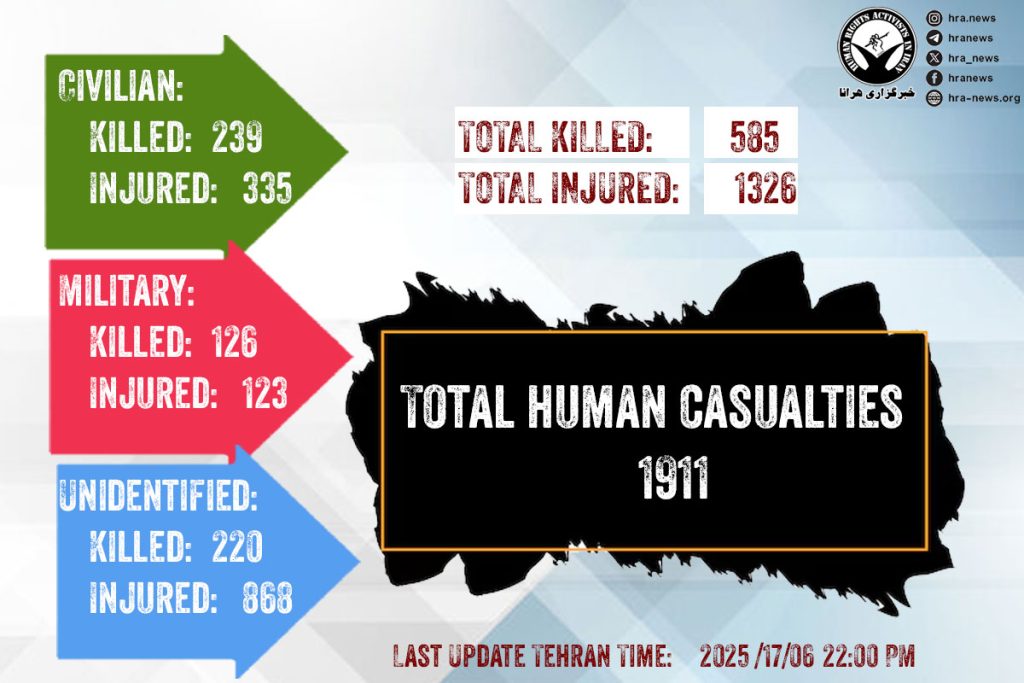
According to non-governmental sources, as of the time this report was compiled (June 17, 23:00 UTC), a total of 1,911 military or civilian citizens have been killed or injured, broken down as follows:
▫️Civilians:
Deaths: 239
Injured: 335
▫️Military personnel:
Deaths: 126
Injured: 123
▫️Unspecified:
Deaths: 220
Injured: 868
▫️Total deaths: 585
▫️Total injured: 1,326
▫️Total human casualties: 1,911 individuals
While a detailed examination of various non-governmental sources documents 1,911 casualties inside Iran, yesterday Ali Mousavi, the Islamic Republic’s ambassador in London, announced that nearly 1,500 people have been killed or injured in the Israeli attacks on Iran. He did not provide precise figures but stated that 224 civilians, including 20 children, have been killed. This comes after the Minister of Health announced yesterday that 1,800 people were injured in Iran during the first four days of the attacks.
At noon yesterday, the Red Crescent spokesperson reported: “So far, 145 injured individuals have been transferred to hospitals by the Red Crescent, and 75 were treated at the scene.” Additionally, a government spokesperson said that 120 women and children have been injured as a result of the Israeli attacks.
Previously, Hossein Kermanpour, head of public relations for the Ministry of Health, claimed in a social media post that 1,481 people were killed or injured during the first 65 hours of Israel’s attack on Iran. He stated that “more than 90 percent of these individuals were civilians.” According to Kermanpour, 522 people have been discharged, with 224 killed and 1,257 injured.
Continued Israeli Strikes on Iran’s Civilian Infrastructure on the Fifth Day
On the fifth day, Israeli attacks struck civilian areas and infrastructure in the cities of Tehran, Kashan, Tabriz, Nazarabad, Zarandieh, Khomein, Qazvin, Najafabad, Ardestan, Shahin Shahr, and Naein. Among the civilian targets were the IRIB broadcasting complex in Tehran, the Nazarabad Industrial Zone, and the Zaviyeh Industrial Park.
According to documented reports, the following civilian areas were targeted: Piroozi Street, areas near IRIB headquarters, Majidieh, Andarzgoo, Sabalan Square, Velenjak, Pasdaran, and Elahieh in Tehran; Valayat District in Qazvin; and areas near Alavijeh Junction in Shahin Shahr.
Additionally, yesterday air defense confrontations with hostile projectiles were reported in Mahabad, Tehran, Natanz, Bandar Abbas, Qazvin, Shiraz, Tabriz, Mashhad, Saqqez, Sabzevar, Kermanshah, Ahvaz, Nahavand, Malayer, and Bushehr.
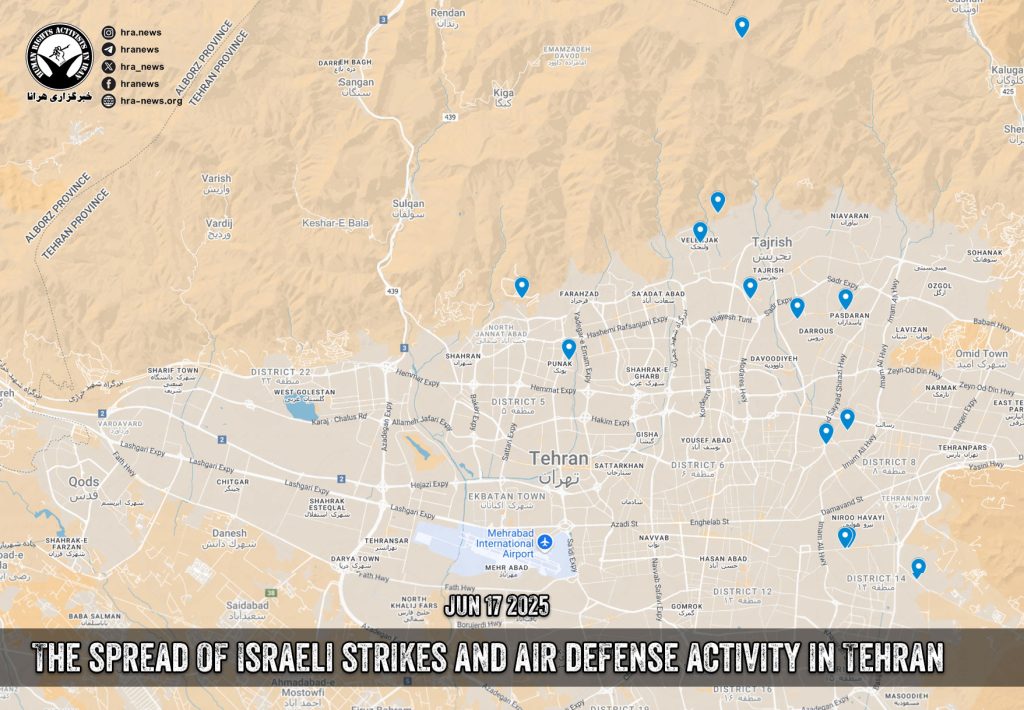
Alongside civilian sites, several military locations were struck, including: a checkpoint headquarters in the Kashan region, Heshmatiyeh Barracks, Al-Zahra Barracks in Tabriz, Quds IRGC Barracks in Shahin Shahr, an ammunition depot and Ayat Base in Villashahr, Hashem Abad Air Defense site in Naein, an additional ammunition depot in Ekhtiarabad, and the 15th of Khordad Barracks in Isfahan.
Communication Disruptions and Secondary Consequences
From the start of the attacks, the Minister of Communications claimed that due to the “special circumstances of the country,” the ministry had temporarily restricted internet access. WhatsApp remained blocked for the fifth consecutive day. IRIB, as the sole official radio and television broadcaster in Iran, urged citizens to delete WhatsApp and Instagram from their phones, claiming that these apps were stealing Iranian user data and cooperating with Israel.
Since the outbreak of military hostilities, access to services based on Cloudflare has also been disrupted — an ongoing issue that has seriously affected independent media activity, emergency data transmission, and real-time access to information.
This morning, Bank Sepah’s infrastructure came under cyberattack, disrupting its services. The IRGC-affiliated Fars News Agency confirmed the cyberattack and reported that because Bank Sepah supports some gas stations, fuel service disruptions may occur in the coming hours.
Later in the day, users across various provinces reported widespread internet disruptions. No official government statements have been made about these interruptions so far.
Official media outlets also reported widespread internet disruptions across multiple provinces. Simultaneously, ArvanCloud Radar and the Telecommunication Infrastructure Company’s monitoring dashboard — which show real-time internet status — also experienced disruptions. Some IT experts warned of the possibility of a complete disconnection from the international internet in the coming hours. Meanwhile, NetBlocks, which monitors internet access restrictions worldwide, confirmed the internet disruptions in Iran.

Yesterday, the Israeli attacks also shut down Tehran’s Grand Bazaar. According to published images, shopkeepers refused to open their businesses.
Arrests and Security Crackdowns
Yesterday, at least 21 individuals were arrested for online activities. Among them: 1 in Bafgh, 18 in Lorestan Province, 1 in Boukan, and 1 in Tehran.
Including these new detentions, a total of 139 Iranian citizens have been arrested over the past five days for their online activity and content related to Israel’s attack on Iran.
Additionally, Fars News Agency, affiliated with Iran’s security institutions, reported the formation of legal cases and arrests of several citizens and media outlets. According to the report, among those targeted were ISNA News Agency, Dideban Iran website, Asr Iran website, Salam Telegram channel, and individuals including Mostafa Mehryein, Motahareh Gonei, Sadegh Al-Hosseini, Ali Sharif Zarchi, Asal Esmaeilzadeh, Hassan Asadi Lari, Atiyeh Rad, Ali Taremi, Atefeh Chaharmahalian, Hadi Tabakhgar, and Hadi Kasaeizadeh. Some of them received warnings, legal cases were opened for others, and some were arrested by court orders. HRANA had previously reported the arrests of Motahareh Gonei and Mostafa Mehryein.
The Tasnim News Agency also reported the arrests of two individuals in Isfahan and Savojbolagh, accusing them of being “affiliated with the Mossad intelligence agency.” The deputy governor of Zanjan Province also announced the arrest of several individuals on charges of collaborating with Israel. Government-affiliated media also published video footage reporting that one individual in Bushehr was arrested for allegedly collaborating with Israeli intelligence.
It should be noted that yesterday, an Iranian prisoner named Esmail Fekri was executed on charges of “spying for Israel.” The judiciary’s news agency claimed that Mr. Fekri was arrested in December 2023, and after the initial verdict, the case was sent to the Supreme Court for appeal, where, “based on the existing evidence,” the lower court’s ruling was upheld.
Other Related Developments
One related development was the cancellation of all nurses’ leave across the country. Sajad Razavi, Deputy Minister of Health for Treatment Affairs, announced that all doctors and nurses nationwide had their leaves canceled and were required to remain continuously present at medical centers.
Emphasis on Compliance with Humanitarian Obligations
As stated above that among other instances, the civilian targets have included the IRIB broadcasting complex in Tehran.
While IRIB functions as a central propaganda outlet for the Iranian government and the IRGC, its targeting raises serious concerns under international humanitarian law. State media is protected as a civilian object unless and for such time as it makes an effective contribution to military action and its destruction offers a definite military advantage. The dissemination of propaganda alone does not satisfy this threshold. Absent concrete evidence that IRIB was directly used for military purposes, such as transmitting operational instructions, its targeting would likely constitute a violation of IHL.
As the field consequences of the attacks expand, the damage to civilian infrastructure and disruption of emergency and medical services have increased. These conditions underscore the urgent need for strict adherence to humanitarian law obligations, including the principles of precaution, proportionality, and distinction between military and civilian targets.
International bodies and human rights defenders have once again stressed the need to ensure safe and unimpeded access to emergency aid and protection for civilians. The ongoing indiscriminate nature of attacks without proper distinction poses serious challenges to the legitimacy of military actions by both parties.
HRA, while continuing to monitor developments on the ground, emphasizes the need for independent investigations, accurate documentation of suspected violations, and legal accountability for all parties involved.
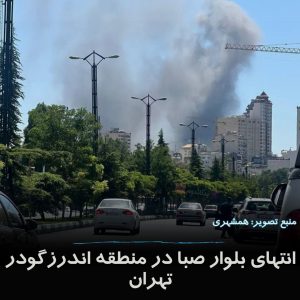 | 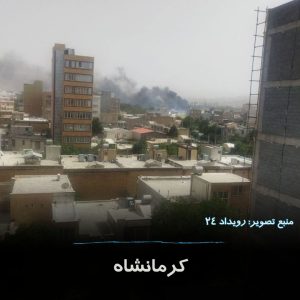 |  |
Saba Blvd in the Andarzgoo area
– Tehran | Kermanshah | Near IRIB (state broadcaster) |



